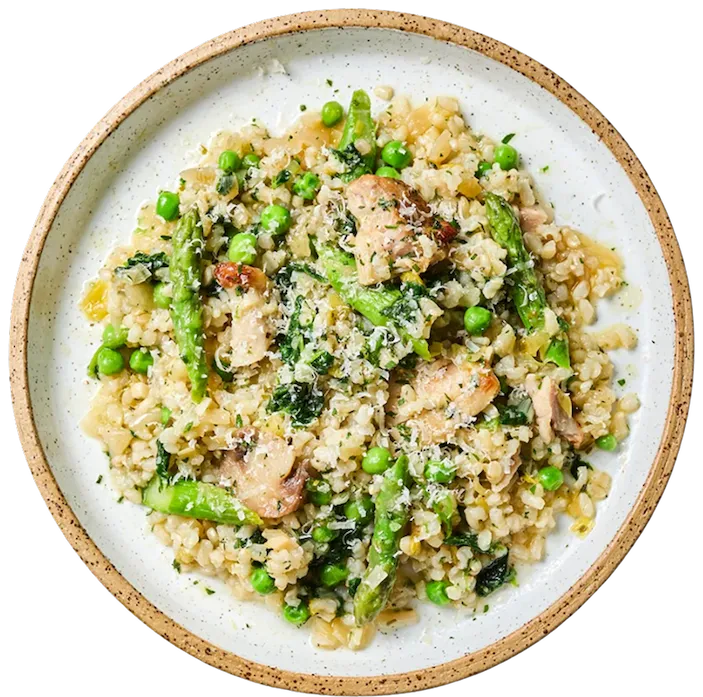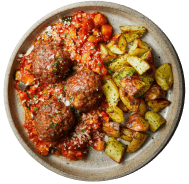Top Tips For Eating A Low FODMAP Diet
How Do I Eat Low FODMAP?
We spoke to Amanda Bishop (moderator of Low FODMAP UK Facebook group), and here's a summary of Amanda's top tips for eating a low FODMAP diet, alongside some myth-busting of common FODMAP misconceptions.
Take home message...
IBS doesn’t mean you can’t have a social life or have to eat rabbit food forever. Making small, sustainable changes for better, long-term outcomes are possible with foods that you like and are safe to eat. Food is more than just nutrients, food is an experience... food is happiness.
Sasha, our Chief Scientific Officer at Field Doctor, had the great pleasure of speaking with Amanda Bishop, one of the moderators of the Low FODMAP UK Facebook group. Amanda is living with IBS and has been following the low FODMAP diet for a long time.
Here are some of the highlights from their chat if you don't have time to listen to the full chat....
- Benefits of joining low FODMAP communities
- not feeling alone
- getting support
- a safe space
- reference to MONASH guidelines
- dispels confusion of low FODMAP diet
- Only follow a low FODMAP diet through the advice from a GP or Registered Dietitian. It’s not for everyone. The NICE guidelines advices to seek the support from a Low FODMAP trained Registered Dietitian.
- Don’t rush! Plan, prep, and get familiar with the diet. You don’t need to cut out lots of foods which may lead to over restriction.
- The key is a healthy, nutritious, diverse dietary intake.
- Be mindful of MONASH App versus paper resources as with technology, the information on apps is typically more up to date.
- How to ascertain if the advice is reliable in facebook group: Ensure they are healthcare professionals and that they are not giving biased advice
- The group should be encouraging you to cook differently, and to properly label reading as IBS affects individuals differently.
- Children must be seen by healthcare professional – they are still a growth stage and changes in food preferences may impact their relationship with food as an adult.
- Asses that your diet is safe, doeable, and that it works as a family (if applicable).
Misconceptions of the low FODMAP diet
- ''FODMAP = gluten free'' - You don’t need to eliminate gluten, just reduce the amount of gluten, and enjoying smaller portions could be fine. Unless you have been diagnosed with coeliac disease, gluten is safe to consume in the right amounts (and without the fructans). MONASH advises 2 slices of sourdough bread a day (that does not contain yeast or sugar).
- ''Lactose-free'' means no dairy - Ensure you are aware of the difference between lactose intolerance versus an allergy to milk protein. Removing lactose or dairy completely is very restrictive. Some cheeses are low in lactose on the MONASH app and there are safe servings, it just depends on your individual symptoms.
- It's a diet for life - Only 4-6 weeks are recommended for elimination of FODMAPs (not forever, this may change your gut health and gut bacteria)
- The reintroduction phase takes forever. It's important to introduce individual foods to help you to understand your triggers but there may be some foods that don't work for you so don't get stuck on those. It's most important to get back to as varied diet as possible and you can revisit some failed challenges in a few months.
Top Tips
- Plan ahead - There is no need to rush, compare what you would normally eat, switch out high FODMAP, batch cook if possible
- Get familiar with diet from MONASH perspective - Check the amounts, check against MONASH amounts versus original recipe
- Don’t feel like you’re doing it alone, IBS can be a debilitating disease, find support networks that work for you
related content
more content: Ibs + Low Fodmap
browse our ranges.
choose from one of our ranges or personalise your own menu from 60+ meals.
- low FODMAP

- eat well, live well programme

- gluten free

- high protein

- weight management

- ibs

- lowest calorie

- lower carbs

- mediterranean

- smaller range

- pcos

- lean + lighter

- menopause

- heart healthy

- plans

- full menu

- gift cards
- take the quiz